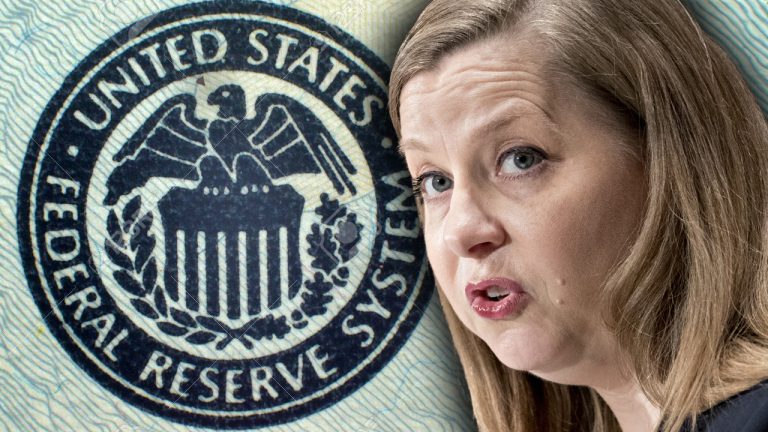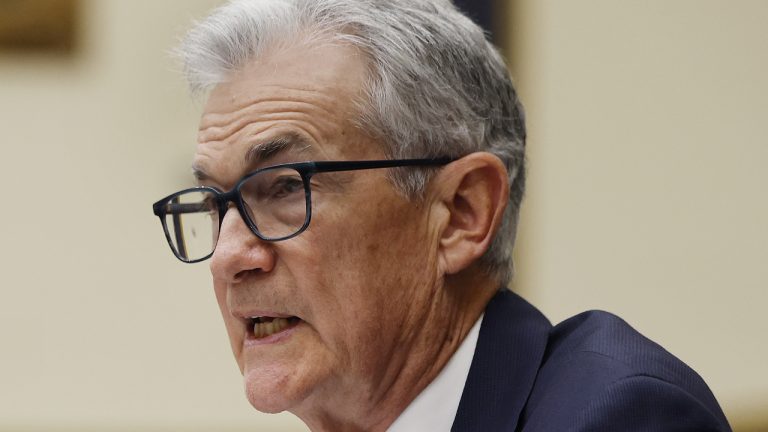 Inflation in the U.S. has remained persistent, experiencing increases in the first two months of 2024, prompting members of the U.S. Federal Reserve to exercise caution against premature rate reductions. Federal Reserve Governor Michelle Bowman has voiced considerations for elevating interest rates, diverging from market anticipations of rate reductions within the year. Bowman’s concerns primarily […]
Inflation in the U.S. has remained persistent, experiencing increases in the first two months of 2024, prompting members of the U.S. Federal Reserve to exercise caution against premature rate reductions. Federal Reserve Governor Michelle Bowman has voiced considerations for elevating interest rates, diverging from market anticipations of rate reductions within the year. Bowman’s concerns primarily […] On Wednesday, March 20, 2024, the Federal Open Market Committee (FOMC) declared that there will be no change to the federal funds rate for the time being. The committee emphasized its intention not to lower the target rate until there is “greater confidence that inflation is moving sustainably” toward the 2% target. Fed Pauses Rate […]
On Wednesday, March 20, 2024, the Federal Open Market Committee (FOMC) declared that there will be no change to the federal funds rate for the time being. The committee emphasized its intention not to lower the target rate until there is “greater confidence that inflation is moving sustainably” toward the 2% target. Fed Pauses Rate […]
A New York-based bank is witnessing the exodus of billions of dollars in deposits amid an industry-wide warning from Fed Chair Jerome Powell. New York Community Bank’s (NYCB) new earnings report shows total deposits fell from $81.365 billion at the end of start of the year to $77.2 billion on March 6th – a drop […]
The post $4,165,000,000 in Deposit Flight Hits New York Bank As Federal Reserve Chair Jerome Powell Warns More Lenders Will Collapse appeared first on The Daily Hodl.

The U.S. Federal Reserve is not rolling out a Central Bank Digital Currency (CBDC) anytime soon, according to Fed Chair Jerome Powell. During the Senate Committee on Banking, Housing and Urban Affairs hearing earlier this week, Powell discussed the central bank’s stance on a CBDC as the Biden administration urged continued research and evaluation of […]
The post The U.S. Federal Reserve Is ‘Nowhere Near’ Recommending or Adopting a CBDC, Says Fed Chair Jerome appeared first on The Daily Hodl.
 Federal Reserve Chairman Jerome Powell engaged with the Senate Banking Committee, signaling that the U.S. is just beginning to contemplate the introduction of a central bank digital currency (CBDC). Powell Assures No Direct Fed Accounts in CBDC Plans, Seeks Congressional Go-Ahead In his conversation with the Senate Banking Committee, Fed Chair Jerome Powell explored the […]
Federal Reserve Chairman Jerome Powell engaged with the Senate Banking Committee, signaling that the U.S. is just beginning to contemplate the introduction of a central bank digital currency (CBDC). Powell Assures No Direct Fed Accounts in CBDC Plans, Seeks Congressional Go-Ahead In his conversation with the Senate Banking Committee, Fed Chair Jerome Powell explored the […]
U.S. Federal Reserve Chair Jerome Powell is warning that the government cannot continue on its path of relentless debt accumulation. In a new 60 Minutes interview with Scott Pelley, Powell says the ballooning national debt is becoming a danger to the stability of the US economy. The Fed Chair calls the attention of the US […]
The post Fed Chair Jerome Powell Warns United States on Unsustainable Fiscal Path Amid Record-High National Debt appeared first on The Daily Hodl.

BitMEX co-founder Arthur Hayes is predicting that one catalyst will cause Bitcoin (BTC) to soar to seven figures. Hayes tells his 448,300 followers on the social media platform X that a decline in commercial property prices may soon prompt the Federal Reserve to inject liquidity into the markets to prop up the economy. He highlights […]
The post Bitcoin To Explode by Over 2,200%, Predicts BitMEX Founder Arthur Hayes – Here’s Why appeared first on The Daily Hodl.

Bitcoin (BTC) and the crypto markets ticked upward on Friday after U.S. Federal Reserve Chair Jerome Powell appeared to express some reserved optimism about the American economy. Powell spoke to students at Spelman College in Atlanta about the Fed’s ongoing strategy for dealing with inflation. The Fed chair says inflation initially sprung up due to […]
The post Crypto Markets Tick Upward on Friday As Fed Chair Jerome Powell Strikes Mixed Tone on Inflation in New Speech appeared first on The Daily Hodl.

Bitcoin reaches levels not seen since May 2022 amid an excited market reaction to the latest Fed inflation commentary.
Bitcoin (BTC) hit $39,000 for the first time since mid-2022 on Dec.

Data from Cointelegraph Markets Pro and TradingView confirmed a new 19-month BTC price high of $39,000 on Bitstamp.
Bitcoin bulls, already in a strong position, beat out resistance as Fed Chair Jerome Powell took to the stage at Spelman College in Atlanta, Georgia for a scheduled appearance.
“The FOMC is strongly committed to bringing inflation down to 2% over time and to keeping policy restrictive until we’re confident that inflation is on a path to that objective,” he said in prepared remarks.
“It would be premature to conclude with confidence that we have achieved a sufficiently resitrive stance, or to speculate on when policy might ease.”
While keeping his tone cautious, Powell appeared to boost risk asset sentiment with his comments on the current state of the U.S.
Reacting, financial commentary resource The Kobeissi Letter was among those with a more sober take on what the Fed might do in future.
“Their narrative has not changed since last year, but markets continue to call for a Fed pivot,” it wrote in part of a post on X (formerly Twitter.)
“As we have stated before, the Fed would rather spark a mild recession than risk a resurgence of inflation.

Led by Chairman Jerome Powell, the Federal Reserve has halted the rise of interest rates. Will it be enough to fuel the surging market through Christmas?
Historically, a Santa rally happens in the weeks leading up to Christmas when a collective sense of goodwill bleeds into equity markets. This is typically a seasonal blip and nothing to write home about. But this year, we could see a far more significant rally as the United States Federal Reserve, the Securities and Exchange Commission and BlackRock line up to deliver a bonanza of holiday cheer.
The Federal Open Market Committee (FOMC) finished its penultimate meeting of 2023 on Wednesday, and it decided to hold interest rates steady. As we know, U.S. inflation has been tamed from a high of 9.1% in June 2022 to its current level of 3.7% thanks to the Fed’s aggressive interest rate hiking cycle that brought the Federal Funds Rate to 5.25-5.5% — its highest level since 2001.
However, while this campaign has been unquestionably successful, markets remain deeply concerned about the potential of higher rates, or even rates sustained at this level, to trigger a recession in the U.S. The Fed also now shares these concerns as it softens to some degree against inflation.
Related: Bitcoin is evolving into a multiasset network
Should the next Bureau of Labor Statistics inflation reading on Nov. 14 show a move downward, we can expect to see money flooding into risk assets as investors anticipate the next interest rate decision to be a cut. This will, of course, have a positive impact on equity markets, and even bond markets as yields fall and the back end of the yield curve flattens.
GUNDLACH: THINK CPI WILL COME DOWN BASED ON INFLATION MODEL
— *Walter Bloomberg (@DeItaone) November 1, 2023
Crypto markets will follow suit, with Bitcoin (BTC) remaining strongly correlated to main markets. What will provide an extra shot in the arm, though, will be the approval of the first U.S.-based Bitcoin spot ETF — which is likely to come before Jan. 10, as J.P. Morgan predicts. This is underlined by the excitement that rumors of the approval of BlackRock’s application have generated over the past few weeks, which sent Bitcoin back up to $35,000: a level it hasn’t enjoyed since the pre-Terra Luna days of 2022.
Eventual approval will provide further impetus for Bitcoin, Ether (ETH), and large swathes of altcoin markets. However, if investors are following the old adage, “buy the rumor, sell the fact”, it may not be huge. We might even see a small dip before a more sustained rally. There is little doubt, however, that approval will be positive for cryptocurrency. Indeed, longer-term it has the potential to be the greatest driver of crypto markets since the conditions created by the Covid pandemic saw BTC top $60,000 in 2021.
Related: Sam Bankman-Fried’s trial is telling a story of classic financial deceit
Potential spanners in the works include higher inflation in the U.S. before the end of the year, and potentially a ramping up of tensions between Israel and Palestine. Either of these could put the brakes on an end-of-year Santa rally — but that does not seem to be the direction of travel right now.
Indeed, Bitcoin has already enjoyed quite a rally this year. While the fallout from the FTX crash in November 2022 saw BTC fall to the $15,000 range and start 2023 at a paltry price of slightly more than $16,000, its level today of $34,000 to $35,000 represents growth of more than 100%. Of course, it’s only the very smart or lucky traders who ever manage to take advantage of Bitcoin’s extreme volatility. Year-on-year, many crypto investors are still nursing losses.
For FTX investors, for example, while there are now hopes some will get their Bitcoin, Ether, and other tokens back, most will face somewhat of a Pyrrhic victory as they stare down the barrel of 60% to 70% losses. This accounts for the generally pessimistic mood in the crypto market, which would otherwise look like the winner of 2023.
As we approach the end of the year, then, it would do all of us well to take a step back and view Bitcoin and crypto markets with fresh eyes. Even if we don’t get a much anticipated and, perhaps, deserved Santa rally, we can celebrate the fact that crypto has survived another challenging year and is ending on a high.
This article is for general information purposes and is not intended to be and should not be taken as legal or investment advice. The views, thoughts and opinions expressed here are the author’s alone and do not necessarily reflect or represent the views and opinions of Cointelegraph.